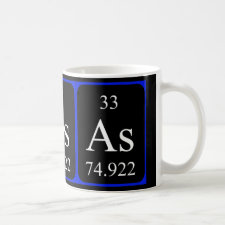
Authors: Önnby L, Pakade V, Mattiasson B, Kirsebom H
Article Title: Polymer composite adsorbents using particles of molecularly imprinted polymers or aluminium oxide nanoparticles for treatment of arsenic contaminated waters.
Publication date: 2012
Journal: Water Research
Volume: 46
Issue: (13)
Page numbers: 4111-4120.
DOI: 10.1016/j.watres.2012.05.028
Alternative URL: http://www.sciencedirect.com/science/article/pii/S0043135412003557
Abstract: Removal of As(V) by adsorption from water solutions was studied using three different synthetic adsorbents. The adsorbents, (a) aluminium nanoparticles (Alu-NPs, < 50 nm) incorporated in amine rich cryogels (Alu-cryo), (b) molecular imprinted polymers ( < 38 μm) in polyacrylamide cryogels (MIP-cryo) and (c) thiol functionalised cryogels (SH-cryo) were evaluated regarding material characteristics and arsenic removal in batch test and continuous mode. Results revealed that a composite design with particles incorporated in cryogels was a successful means for applying small particles (nano- and micro- scale) in water solutions with maintained adsorption capacity and kinetics. Low capacity was obtained from SH-cryo and this adsorbent was hence excluded from the study. The adsorption capacities for the composites were 20.3 ± 0.8 mg/g adsorbent (Alu-cryo) and 7.9 ± 0.7 mg/g adsorbent (MIP-cryo) respectively. From SEM images it was seen that particles were homogeneously distributed in Alu-cryo and heterogeneously distributed in MIP-cryo. The particle incorporation increased the mechanical stability and the polymer backbones of pure polyacrylamide (MIP-cryo) were of better stability than the amine containing polymer backbone (Alu-cryo). Both composites worked well in the studied pH range of pH 2 - 8. Adsorption tested in real wastewater spiked with arsenic showed that co-ions (nitrate, sulphate and phosphate) affected arsenic removal for Alu-cryo more than for MIP-cryo. Both composites still adsorbed well in the presence of counter-ions (copper and zinc) present at low concentrations (μg/l). The unchanged and selective adsorption in realistic water observed for MIP-cryo was concluded to be due to a successful imprinting, here controlled using a non-imprinted polymer (NIP). A development of MIP-cryo is needed, considering its low adsorption capacity
Template and target information: arsenic, As(V)
Author keywords: composites, Arsenic, Cryogels, adsorption, Molecular Imprinted Polymers (MIP)



Join the Society for Molecular Imprinting

New items RSS feed
Sign-up for e-mail updates:
Choose between receiving an occasional newsletter or more frequent e-mail alerts.
Click here to go to the sign-up page.
Is your name elemental or peptidic? Enter your name and find out by clicking either of the buttons below!
Other products you may like:
 MIPdatabase
MIPdatabase









